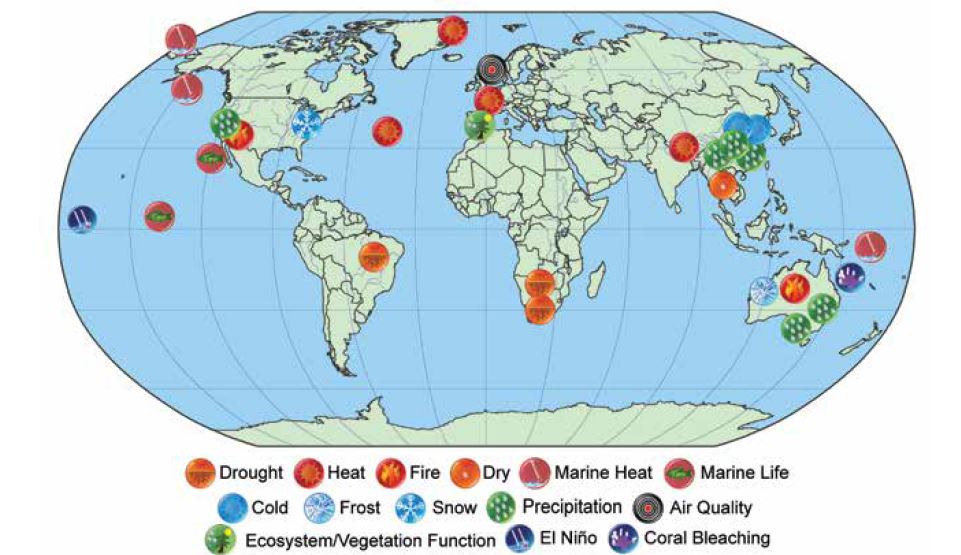
Major weather extremes in 2016 due to “human influence on climate”
The report “makes clear that we’re experiencing new weather, because we’ve made a new climate.”
The Trump Administration may continue to deny climate change as fake news, but the science continues to stack up against them, showing that even though Trump denies it, climate change is getting worse.
New research published in the Bulletin of the American Meteorological Society’s (BAM) Explaining Extreme Events in 2016 from a Climate Perspective, outlines how that, not only is climate change making weather events worse, but some extreme weather would not have happened without climate change.
The report is based on 27 peer-reviewed analyses of extreme weather across five continents and two oceans during 2016. It features the research of 116 scientists from 18 countries. This is not fake news.
The scientists outline how “Last year’s record global heat, extreme heat over Asia, and unusually warm waters in the Bering Sea would not have been possible without human-caused climate change.”
To underline the significance of these findings, they note that: “In the six years scientists have been producing this annual report, this is the first time they have found that extreme events could not have happened without human-caused warming of the climate through increases in greenhouse gases.”
Jeff Rosenfeld is the editor in chief of BAM. He argues that “This report marks a fundamental change. “For years scientists have known humans are changing the risk of some extremes. But finding multiple extreme events that weren’t even possible without human influence makes clear that we’re experiencing new weather, because we’ve made a new climate.”
Not only are we making new weather, but we are also increasing the “intensity and likelihood of other terrestrial heat events around the world”.
Due to climate change the El Niño was worse, the severity of coral bleaching in the Great Barrier Reef was more extreme, and North Pacific Ocean was warmer, impacting fisheries and other resources in the region.
Everywhere they looked, our impact on climate was having an impact.
Globally, the record mean surface temperature for the world in 2016 was found to be “only possible due to substantial centennial-scale anthropogenic warming.”
In Asia “The 2016 extreme warmth across Asia would not have been possible without climate change.”
In the ocean, temperatures in the Gulf of Alaska, Bering Sea, and off northern Australia were the most elevated in 35 years of satellite records, leading to massive bleaching of the Great Barrier Reef and one of the largest harmful algal blooms ever off the Alaska shore.
The Arctic 2016 warmth “cannot be explained without anthropogenic climate warming.”
They flagged some disturbing trends. In Southern Africa, for example, flash droughts have tripled in the last 60 years mainly due to human-caused climate change.
Meanwhile extreme rains, like the record-breaking 2016 event in Wuhan, China are 10 times more likely in the present climate than they were in 1961.
Professor Michael Mann, one of the world’s leading climate scientists, who was not involved in the research, said that he thought the study “speaks to the profound nature of the impacts we’re now seeing.”

